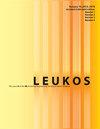一种评价和确定光源色度的改进方法
IF 2.6
2区 工程技术
Q2 CONSTRUCTION & BUILDING TECHNOLOGY
引用次数: 2
摘要
本文描述了一种利用国际照明委员会(CIE) 2015年10°配色函数(CMFs)计算和指定光源色度的方法,根据现有心理物理实验数据分析,与基于传统CIE 1931 2°CMFs的规格相比,该方法可以减少建筑照明应用中视觉不匹配的情况。具体来说,本工作评估、记录并建议照明标准组织采用一套用于CIE 2015 10°CMFs的支持系统:一个新的均匀色度标度(UCS)图,坐标为(s, t),相关色温(CCTst)的测量,以及距离普朗克轨迹(Dst)的测量。它还提出了更新标称分类四边形的选项。这种性质的完整方法尚未标准化,这可能是CIE 2015 CMFs吸收缓慢的原因。建议的工具类似于u, v, CCT, Duv和美国国家标准协会(ANSI) C78.377色度规范,这些色度规范目前都在使用CIE 1931 2°CMFs的CIE 1960 UCS图中定义。虽然概念上是等同的,但目前的标准方法和所提出的st系统之间的差异对于减少光色度的意外视觉不匹配是重要的。改变色度规格方法的影响是通过一组真实光源光谱功率分布的比较来确定的。本文章由计算机程序翻译,如有差异,请以英文原文为准。
Improved Method for Evaluating and Specifying the Chromaticity of Light Sources
ABSTRACT This article describes a method for calculating and specifying light source chromaticity using the International Commission on Illumination (CIE) 2015 10° color matching functions (CMFs), which, according to analysis of existing psychophysical experiment data, can reduce visual mismatch compared to specifications based on the traditional CIE 1931 2° CMFs in architectural lighting applications. Specifically, this work evaluates, documents, and recommends for adoption by lighting standards organizations a supporting system of measures to be used with the CIE 2015 10° CMFs: a new uniform chromaticity scale (UCS) diagram with coordinates (s, t), a measure of correlated color temperature (CCTst), and a measure of distance from the Planckian locus (Dst). It also presents options for updating nominal classification quadrangles. A complete method of this nature has not yet been standardized, which may be contributing to the slow uptake of the CIE 2015 CMFs. The proposed tools are analogous to u, v, CCT, Duv, and the American National Standards Institute (ANSI) C78.377 chromaticity specifications that are all currently defined in the CIE 1960 UCS diagram using the CIE 1931 2° CMFs. While conceptually equivalent, the differences between the current standard method and the proposed st system are important for reducing unintended visual mismatch in the chromaticity of light. The implications of changing chromaticity specification methods are identified by a comparison over a diverse set of real light source spectral power distributions.
求助全文
通过发布文献求助,成功后即可免费获取论文全文。
去求助
来源期刊

Leukos
工程技术-光学
CiteScore
7.60
自引率
5.60%
发文量
19
审稿时长
>12 weeks
期刊介绍:
The Illuminating Engineering Society of North America and our publisher Taylor & Francis make every effort to ensure the accuracy of all the information (the "Content") contained in our publications. However, The Illuminating Engineering Society of North America and our publisher Taylor & Francis, our agents, and our licensors make no representations or warranties whatsoever as to the accuracy, completeness, or suitability for any purpose of the Content. Any opinions and views expressed in this publication are the opinions and views of the authors, and are not the views of or endorsed by The Illuminating Engineering Society of North America and our publisher Taylor & Francis. The accuracy of the Content should not be relied upon and should be independently verified with primary sources of information. The Illuminating Engineering Society of North America and our publisher Taylor & Francis shall not be liable for any losses, actions, claims, proceedings, demands, costs, expenses, damages, and other liabilities whatsoever or howsoever caused arising directly or indirectly in connection with, in relation to, or arising out of the use of the Content. Terms & Conditions of access and use can be found at http://www.tandfonline.com/page/terms-and-conditions .
 求助内容:
求助内容: 应助结果提醒方式:
应助结果提醒方式:


